Forum on trading, automated trading systems and testing trading strategies
Something Interesting to Read November 2016
Muhammad Syamil Bin Abdullah, 2016.11.15 07:05
Equity Markets and Portfolio Analysis
In recent years, changes have swept through the investment industry like wildfire. Academia has followed along and provided new lenses for viewing this transformation, as well as new strategies for gaining a true understanding and knowledge of investment and financial markets. Now, Equity Markets and Portfolio Analysis has been created to further inform investment professionals and finance students on the basic concepts and strategies of investments, and to provide more detailed discussions on advanced strategies and models. The concepts covered in this book will help readers gain a better understanding of the markets and uses for an increasing number of securities, strategies, and methodologies.
Equity Markets and Portfolio Analysis is the only core investment book that covers the functionality of Bloomberg terminals, increasingly critical tools both in the classroom and on the trading floor. As Bloomberg terminals now play a key role in the research, teaching, and managing of student investment funds, understanding the system's information and analytical functions has become more important than ever.
- In-depth coverage of fundamentals through more detailed concepts for students and professionals who want to better understand the evaluation, selection, and management of securities
- One-of-a-kind training and instructional course, introduction to Bloomberg investment subjects, and reference for CFA preparation
- Bloomberg material provided in an appendix accompanying each chapter, a useful option for professors
- Ideal for finance practitioners, investment bankers, and academics
This unique resource will give readers both the foundational knowledge and the analytical tools necessary for investment success, both in the classroom and in the real world.
Table of Contents
Preface ix
Acknowledgments xiii
CHAPTER 1 Overview of the Financial System 1
CHAPTER 2 Overview and Guide to the Bloomberg System 29
CHAPTER 3 Stock and Bond Valuation and Return 73
CHAPTER 4 Equity Securities, Markets, and Trading 131
CHAPTER 5 Investment Funds, Intermediate Securities, and Global Equity Markets 179
CHAPTER 6 Expected Rate of Return and Risk—Stock 221
CHAPTER 7 Portfolio Evaluation 267
CHAPTER 8 Portfolio Selection—Markowitz Model 303
CHAPTER 9 The Capital Asset Pricing Model 347
CHAPTER 10 The Arbitrage Pricing Theory 365
CHAPTER 11 The Financial Anatomy of a Company—Fundamental Analysis 385
CHAPTER 12 Applied Fundamental Analysis 437
CHAPTER 13 Market and Industrial Analysis: Top-Down Approach 487
CHAPTER 14 Technical Analysis 537
CHAPTER 15 Efficient Markets 581
CHAPTER 16 Options Markets 623
CHAPTER 17 Futures Markets 669
Index 695
Author Information
R. STAFFORD JOHNSON is Professor of Finance at the Williams College of Business, Xavier University. He is the author of five books: Options and Futures, Introduction to Derivatives, two editions of Bond Evaluation, Selection, and Management, and Debt Markets and Analysis. He has also written articles appearing in journals such as Applied Economics, Journal of Financial Education, International Review of Economics & Business, Journal of Economics, The Financial Review, and the Review of Quantitative Finance and Accounting.
Forum on trading, automated trading systems and testing trading strategies
Something Interesting to Read November 2016
Muhammad Syamil Bin Abdullah, 2016.11.14 08:04
The Economic Indicator Handbook: How to Evaluate Economic Trends to Maximize Profits and Minimize Losses
Analyze key indicators more accurately to make smarter market moves
The Economic Indicator Handbook helps investors more easily evaluate economic trends, to better inform investment decision making and other key strategic financial planning. Written by a Bloomberg Senior Economist, this book presents a visual distillation of the indicators every investor should follow, with clear explanation of how they're measured, what they mean, and how that should inform investment thinking. The focus on graphics, professional application, Bloomberg terminal functionality, and practicality makes this guide a quick, actionable read that could immediately start improving investment outcomes. Coverage includes gross domestic product, employment data, industrial production, new residential construction, consumer confidence, retail and food service sales, and commodities, plus guidance on the secret indicators few economists know or care about.
Past performance can predict future results – if you know how to read the indicators. Modern investing requires a careful understanding of the macroeconomic forces that lift and topple markets on a regular basis, and how they shift to move entire economies. This book is a visual guide to recognizing these forces and tracking their behavior, helping investors identify entry and exit points that maximize profit and minimize loss.
Quickly
evaluate economic trends
Make
more informed investment decisions
Understand the most essential indicators
Translate predictions into profitable actions
Savvy market participants know how critical certain indicators are to the formulation of a profitable, effective market strategy. A daily indicator check can inform day-to-day investing, and long-term tracking can result in a stronger, more robust portfolio. For the investor who knows that better information leads to better outcomes, The Economic Indicator Handbook is an exceptionally useful resource.
Forum on trading, automated trading systems and testing trading strategies
Something Interesting to Read November 2016
Muhammad Syamil Bin Abdullah, 2016.11.13 05:10
Fibonacci Analysis by Constance Brown
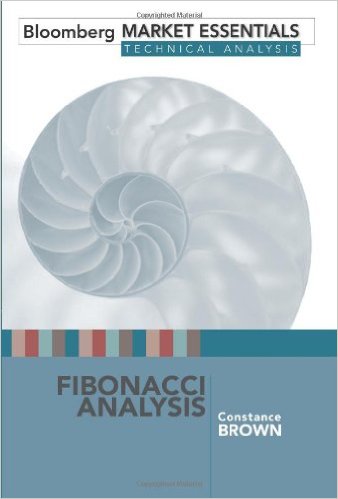
Only someone who is both a successful trader and a successful writer could pull off what Constance Brown has accomplished in this book: distilling Fibonacci analysis to two hundred or so comprehensive, clearly written, eminently practical pages.
Brown knows exactly what a professional trying to come up to speed on a new trading tool needs and she provides it, covering what Fibonacci analysis is, how it works, where it comes from, pitfalls and dangers, and, of course, how to use it. Basic trading strategies are touched upon in virtually every chapter.
Fibonacci analysis is one of the most popular technical analysis tools, yet it is often used incorrectly. Brown quickly clears up common misconceptions and moves on to show, step by step, the correct way to apply the technique in any market.
Those with Fibonacci analysis software will learn how to use it with maximum effectiveness; those without will chart the market the old-fashioned way. All will find answers to the trader's most important questions:
- Where is the market going?
- At what level should my stop be entered?
- Based on the size of my trading account, how much should I leverage into a trading position?
- Can I tell if I am in trouble before my stop is hit?
- How much should I buy or sell if given a second or third opportunity?
Occasional references to other tools--including Elliott Wave, W.D. Gann, and candlestick charts--and an extensive bibliography make this book richer for accomplished technical analysts without confounding the less experienced. Plentiful real-life examples and dozens of carefully annotated charts insure every reader will get maximum value from every minute spent with this book.
About the Author
Constance Brown, CMT, is on the accreditation board of the Market Technicians Association. Her book, Technical Analysis for the Trading Professional, is required reading for the Level III Chartered Market Technician certification exam. She founded Aerodynamic Investments to advise and offer research to financial institutions and banks worldwide. Clients include Credit Suisse, Merrill Lynch, Morgan Stanley, Bundesbank, and Bank of Tokyo as well as clients in Kuwait, South Africa, Australia, Russia, and Indonesia. Previously, she worked as an institutional trader in New York City. She now lives and works in South Carolina. She is the author of six other books.
Global Macro Trading : Profiting In A New World Economy
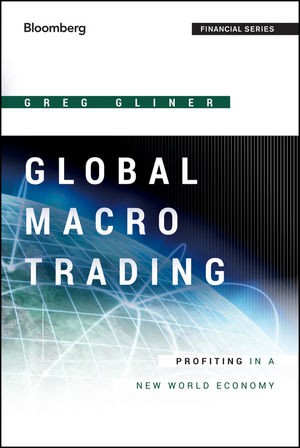
Global Macro Trading is an indispensable guide for traders and investors who want to trade Global Macro – it provides Trading Strategies and overviews of the four asset classes in Global Macro which include equities, currencies, fixed income and commodities. Greg Gliner, who has worked for some of the largest global macro hedge funds, shares ways in which an array of global macro participants seek to capitalize on this strategy, while also serving as a useful reference tool. Whether you are a retail investor, manage your own portfolio, or a finance professional, this book equips you with the knowledge and skills you need to capitalize in global macro.
- Provides a comprehensive overview of global macro trading, which consists of portfolio construction, risk management, biases and essentials to query building
- Equips the reader with introductions and tools for each of the four asset classes; equities, currencies, fixed income and commodities
- Arms you with a range of powerful global-macro trading and investing strategies, that include introductions to discretionary and systematic macro
- Introduces the role of central banking, importance of global macroeconomic data releases and demographics, as they relate to global macro trading
Price Action Breakdown: Exclusive Price Action Trading Approach to Financial Markets
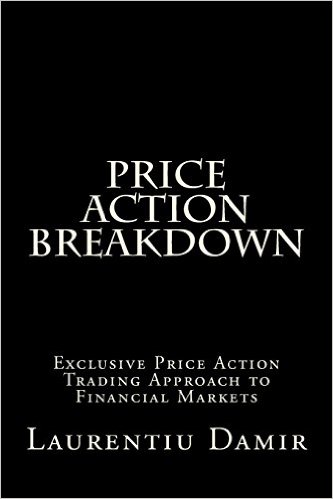
What will you learn by reading this book ?
- How to find the bulk of trading volume by analyzing price action movements alone, without the use of additional tools or technical indicators. This will, in turn, reveal the location of the value of price on your charts to provide valuable insights regarding extremely powerful support and resistance areas that you can take advantage of in real trading conditions.
- Proven price action concepts and techniques to find the market trend, thoroughly analyze its overall strength and make the most informed judgments possible about its termination. You will learn how to use the value of price to find out very early when the trend will end and predict with high accuracy where the market will go next.
- You will be able to develop a clear market structure just by interpreting the price movements on your charts. Regardless of the time frame you use for trading or the market you are trading, the future price movements will start to trade at and around your predicted trading areas. The price action analysis will allow you to see the big picture of the market at all times. You will be trading with an edge and with confidence.
- How to discover the footprint of the big financial institutions entering the market by doing exclusive price action analysis of the current trend to find supply and demand zones created by the traders with big volumes that move the markets.
- Working, highly profitable tested trading strategy that you can apply to the forex market, the stock market and all the other liquid markets where technical analysis can be applied. The power of this type of trading is that it is based on the underlying supply and demand dynamics, behind the price movements. These are just an intermediary that we interpret to find what we are really interested in - where are the buying and selling orders situated in the market.
- Perhaps the most important, you will learn a complete thought process that will make you a very versatile trader, able to adapt to the constantly changing market conditions. This will change the way you see the market and the way you trade it.
If all described above sound like hard work, do not worry. In a short time period, with a little bit of practice you will be able to interpret what price action is telling you without much effort. The exclusive methods explained in the book will give you the edge you need in order to be a consistently profitable trader.
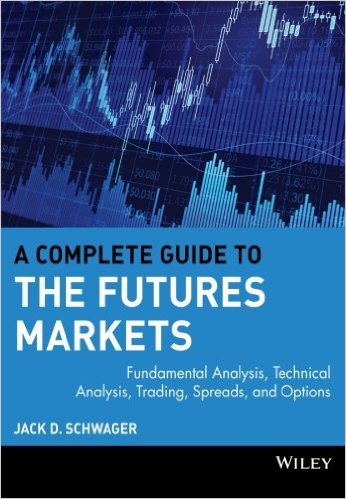
Focusing on price-forecasting in the commodity futures market, this is the most comprehensive examination of fundamental and technical analysis available. Treats both approaches in depth, with forecasting examined in conjunction with practical trading considerations.
Schwager is the starting point for any serious reading on futures and
options trading. Disregard comments below on its being to quantitative.
No, you don't need a Ph.D. in math nor high school calculus (there isn't
a single integral or differential equation in the whole book). You
should have a starting basis in statistics as well as some pre-existing
intuition about markets.
It is well-written and clear,and truly
encyclopedic in scope : every conceivable options trade, with all
permutations thereof, is discussed and dissected, even inadvisable ones
(they too are informative). A classic book whose age (mine is copyright
1984!) testifies to its enduring worth. To summarize, you can't really
trade futures or options and expect to make money without it.
The Commitments of Traders Bible: How To Profit from Insider Market Intelligence : Stephen Briese
The Commodity Futures Trading Commission's weekly Commitments of Traders (COT) report has established the U.S. futures market as one of the most transparent exchanges in the world—and created a level playing field for commodity and futures traders of all sizes in the process. But the information found within the COT report extends well beyond the confines of the commodity pits and can be profitably applied to virtually any market sector, from equities and treasuries to forex, gold stocks, and exchange-traded funds.
Nobody understands this better than author Stephen Briese, an industry-leading expert on COT data. And now, with The Commitments of Traders Bible, he shares the insights and experiences of his successful career to help put the COT report in perspective. Written in a straightforward and accessible style, this detailed guide skillfully examines the predictive power of COT data and reveals how you can accurately interpret it in order to analyze market movements and make the most informed investment decisions possible.
Divided into two comprehensive parts, this reliable resource:
-
Takes you through a brief history of the COT report and explains how it has evolved over time
-
Illustrates how the dozens of numbers published on specific markets expose the positions of the biggest and smartest market insiders
-
Describes how to properly view the COT Index and use it to avoid the traps that most observers fall into
-
Offers technicians and chartists various ways to incorporate COT analysis into their existing programs
-
Discusses individual idiosyncrasies and patterns that appear in certain markets—from oil to interest rates
-
Lists hundreds of securities from all over the world whose prices are highly correlated with commodities contained in the COT report
Regardless of your trading methods, and no matter what markets you're involved in, there is a COT report that you should be reviewing every week. With The Commitments of Traders Bible as your guide, you'll gain an invaluable edge over uninformed market participants as you learn how to use legal "insider" information to enhance your everyday investment endeavors.
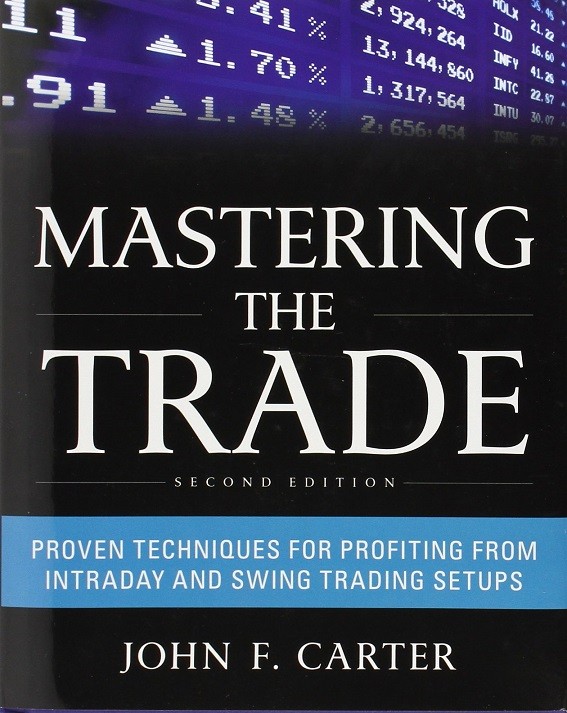
Trading books, they're a dime a dozen. If only their cover prices
reflected that reality. Mastering The Trade, by John F. Carter,
Published by Mcgraw-Hill Trader's Edge is an example of the exception
that proves the rule.
Carter, who is a CTA, trader, writer and
trading educator, effectively communicates his strategies, methods and
insights in this 400 page book.
The book is divided into Three parts:
In
Part One, Carter explains hardware requirements, market mechanics,
general market theory, trading psychology and finally, the all-important
subject of interpretation of market internals. Begining traders will
find all of these sections to be of value. While even experienced
traders will greatly benefit from Carter's discussions of trading
psychology and market internals.
Part Two examines Carter's
specific set-ups for futures, equities, forex and options. Clear
directions coupled with informative diagrams leave little question as to
how he trades his set-ups. Carter coveys the reasons he pulls the
trigger, and perhaps more importantly, the reasons he may let a set-up
pass.
Part Three covers preparation for the trading day, creating
and executing a trading business plan, thoughts on how to fine tune
your trading and even a self-evaluation tool helping traders to hone in
on the best markets to trade for their own personalities.
This
trader/reviewer wishes that he had the knowledge that Carter imparts
regarding reading and interpretation of market internals when he began
trading. Carter lucidly explains use of the Tick, the Trin, the TICKI
the Premium and other indicators which allow the trader to interpret the
health of the market, and make decisions based on fact rather than
feeling. Carter's set-ups are simple and effective when evaluated in
the context of market internals which he explains clearly. Finally, the
author's advice on market psychology is sterling.
This book covers new ground, offering both new and experienced traders the opportunity to add effective weapons to their informational arsenals that can help them win in their daily assaults on the market.
More About the Author
John F. Carter grew up the son of Morgan Stanley stockbroker, and was introduced into trading as a sophomore in high school, and has been trading actively for the past 19 years. He studied international finance at the University of Cambridge in England before graduating from the University of Texas at Austin. John has been a full time trader since 1996. In 1999, tired of talking to his goldfish while trading alone in his office, he launched www.tradethemarkets.com to post his trading ideas. Today he has a following of over 10,000 people. John publishes separate daily newsletters for futures/single stock futures, options and equities trading, and, more recently, forex, at www.razorforex.com. He's a Commodity Trading Advisor (CTA) with Razor Trading, manages a futures and a forex fund. McGraw Hill tapped him to write a book entitled Mastering the Trade, due out in December, 2005. To keep his sanity, John relies on physical activity after the close to deal with the financial swings he and his subscribers encounter. He clears his head running, swimming, traveling with his wife, Maria, and playing with his son, James.
High probability trading : take the steps to become a successful trader : Marcel Link
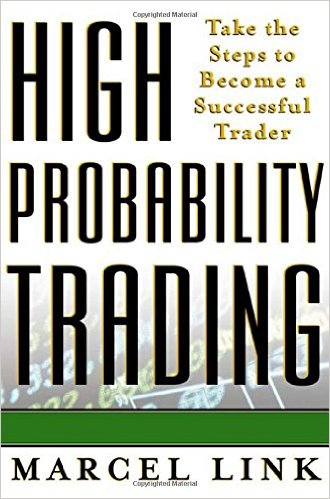
DESCRIPTION
Within 6 months of beginning their careers full of promise and hope, most traders are literally out of money and out of trading. This work reduces the likelihood that you may have to pay this "traders' tuition," by detailing a market-proven program for weathering those first few months and becoming a profitable trader from the beginning.
"The Goal Is to Teach All Traders to Think with the Mindset of a Successful Trader..." While successful trading requires tremendous skill and knowledge, it begins and ends with mindset. What do exceptional traders think when they purchase a quality stock and the price immediately plummets? How do they keep one bad trade from destroying their confidence - and bankroll? What do they know that the rest of us don't? "Some trades are not worth the risk and should never be done."High Probability Trading" shows you how to trade only when the odds are in your favor. From descriptions of the software and equipment an exceptional trader needs high probability signals that either a top or bottom has been reached, it is today's most complete guidebook to thinking like an exceptional trader - every day, on every trade. "It's not how good you are at one individual thing, but it's the culmination of every aspect of trading that makes one successful."Before he became a successful trader, Marcel Link spent years wading from one system to the next, using trial and error to figure out what worked, what didn't, and why. In "High Probability Trading", Link reveals the steps he took to become a consistent, patient, and winning trader - by learning what to watch for, what to watch out for, and what to do to make each trade a high probability trade. "Why do a select few traders repeatedly make money while the masses lose? What do bad traders do that good traders avoid, and what do winning traders do that is different? Throughout this book I will detail how successful traders behave differently and consistently make money by making high probability trades and avoiding common pitfalls..." - From the preface.Within 6 months of beginning their careers full of promise and hope, most traders are literally out of money and out of trading. "High Probability Trading" reduces the likelihood that you will have to pay this "traders' tuition," by detailing a market-proven program for weathering those first few months and becoming a profitable trader from the beginning.Combining a uniquely blunt look at the realities of trading with examples, charts, and case studies detailing actual hits and misses of both short- and long-term traders, this straightforward guidebook discusses: the 10 consistent attributes of a successful trader, and how to make them work for you; strategies for controlling emotions in the heat of trading battle; technical analysis methods for identifying trends, breakouts, reversals, and more; market-tested signals for consistently improving the timing of entry and exit points; how to "trade the news" - and understand when the market has already discounted it; and learning how to get out of a bad trade before it can hurt you. The best traders enter the markets only when the odds are in their favor. "High Probability Trading" shows you how to know the difference between low and high probability situations, and only trade the latter. It goes far beyond simply pointing out the weaknesses and blind spots that hinder most traders to explaining how those defects can be understood, overcome, and turned to each trader's advantage. While it is a cliche, it is also true that there are no bad traders, only bad trades. Let "High Probability Trading" show you how to weed the bad trades from your trading day by helping you see them before they occur.Packed with charts, trading tips, and questions traders should be asking themselves, plus real examples of traders in every market situation, this powerful book will first give you the knowledge and tools you need to tame the markets and then show you how to meld them seamlessly into a customized trading program - one that will help you join the ranks of elite traders and increase your probability of success on every trade.
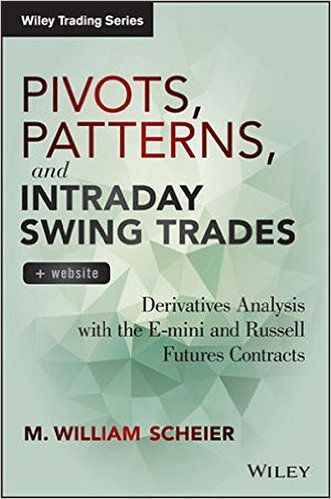
When the Chicago Mercantile Exchange launched the S&P 500 E-mini in 1997, their aim was to provide non-professionals with an opportunity to trade on an even footing with professional traders. Judging by the fact that the intervening years have seen a veritable boom of E-mini stock index trading worldwide, one can conclude that their experiment was a smashing success.
It's easy to see why E-mini trading has become so popular among day traders. First, there are the much lower margins associated with the smaller contract sizes, as compared to their floor-traded counterparts. Also, because trades are executed entirely electronically, there are no market makers or floor brokers. And, unlike commodities or standard futures, there is virtually no chance of manipulation, insider trading or any of the other problems that occasionally affect other financial markets. But along with its many advantages and abundant opportunities, E-mini trading brings an entirely new set of challenges and potential pitfalls that can bedevil the best laid plans of beginners and seasoned day traders alike.
Due to extreme leverage and the intense participation they receive, the stock index futures markets afford little time for traders to dwell on technical conditions. Intraday volatility in the stock indices is far more exaggerated than that reflected in the daily bar charts of other markets. And positioning techniques that have proven reliable in anticipating the actions of long-term trends in other instruments, fail miserably when applied to the countertrend reactions of the highly leveraged S&P futures contract within the shorter, intraday time frames.
Author Will Scheier draws upon his decades of experience as a highly successful day trader and trading educator to provide you with:
- A framework of Day Models for making sense of the chaos of the day trading environment
- Codified, easy-to-adapt trade entry setups
- Trading techniques that are anything but mechanical scalping
- Technical Trade Event Models and their rules
- Tools for spotting major intraday swing trends at the instant they begin
- Fresh insights to Old School and floor trader concepts like the Open Range, Taylor 3-day Cycle and classic pattern breakout filtering
- Archived performance record of real-time trade calls
Divided into four parts, the technical tools exposed in the first three parts are eventually brought together into a cohesive whole in Part Four. There, a special meaning is afforded to them when they arrive in the confluence of pattern, price and time. In addition, once the identity of completed trade entry models are established, Part Four of the book then includes the blueprint for creating a Trade Plan, and enumerates the rules necessary to conduct a business according to that Plan.
Engaging, informative, practical, this reliable resource will put you in a prime position to profit mightily in today's ever more volatile stock markets
- Free trading apps
- Over 8,000 signals for copying
- Economic news for exploring financial markets
You agree to website policy and terms of use
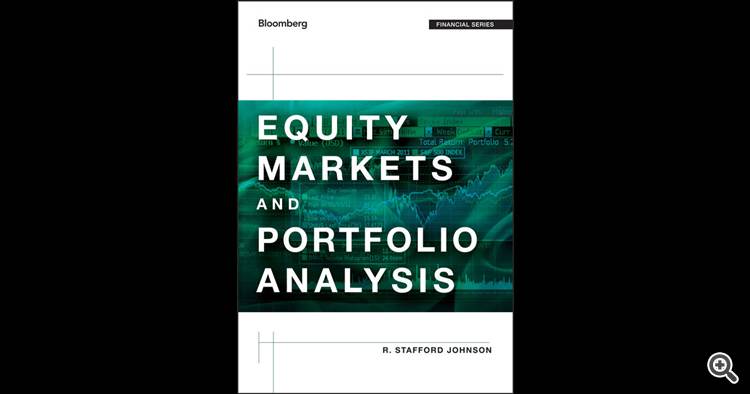

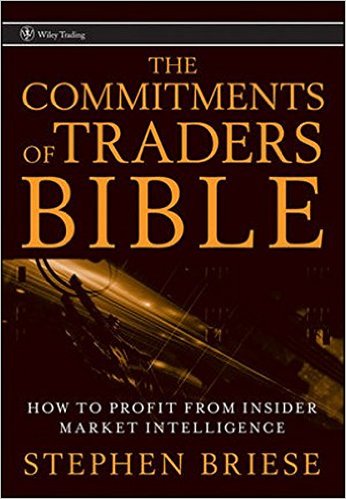
This is the thread about books related for stocks, forex, financial market and economics. Please make a post about books with possible cover image, short description and official link to buy (amazon for example).
Posts without books' presentation, without official link to buy and with refferal links will be deleted.Posts with links to unofficial resellers will be deleted